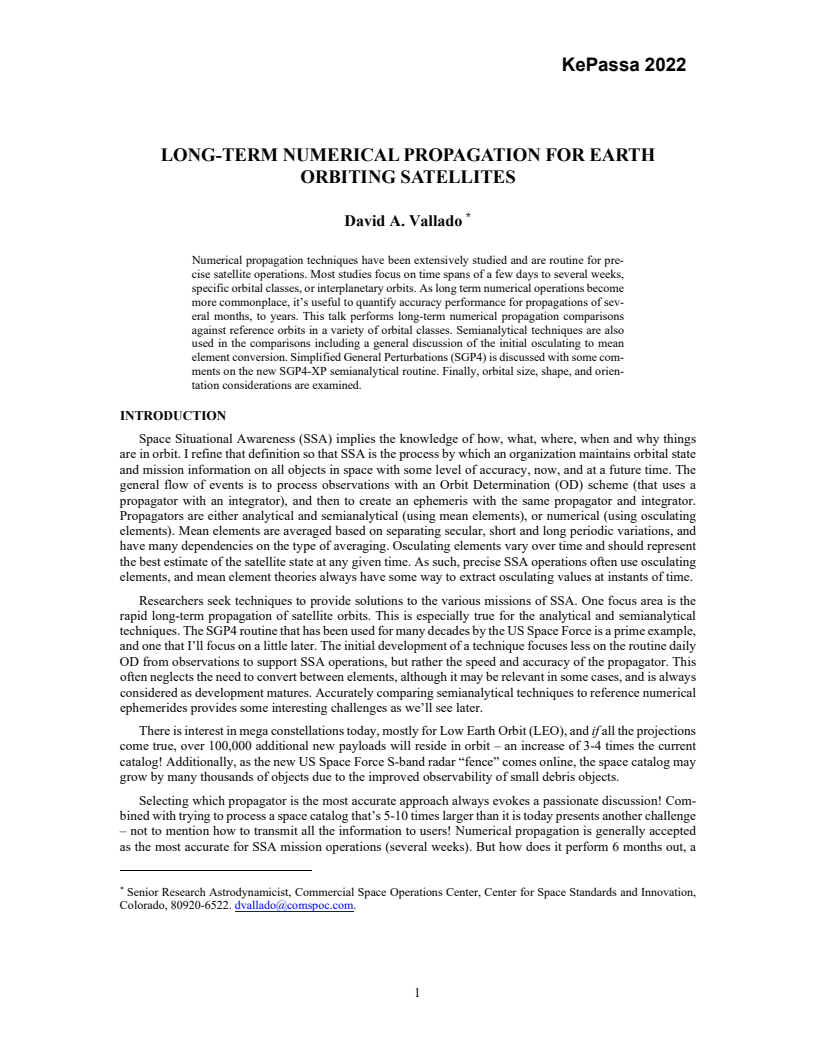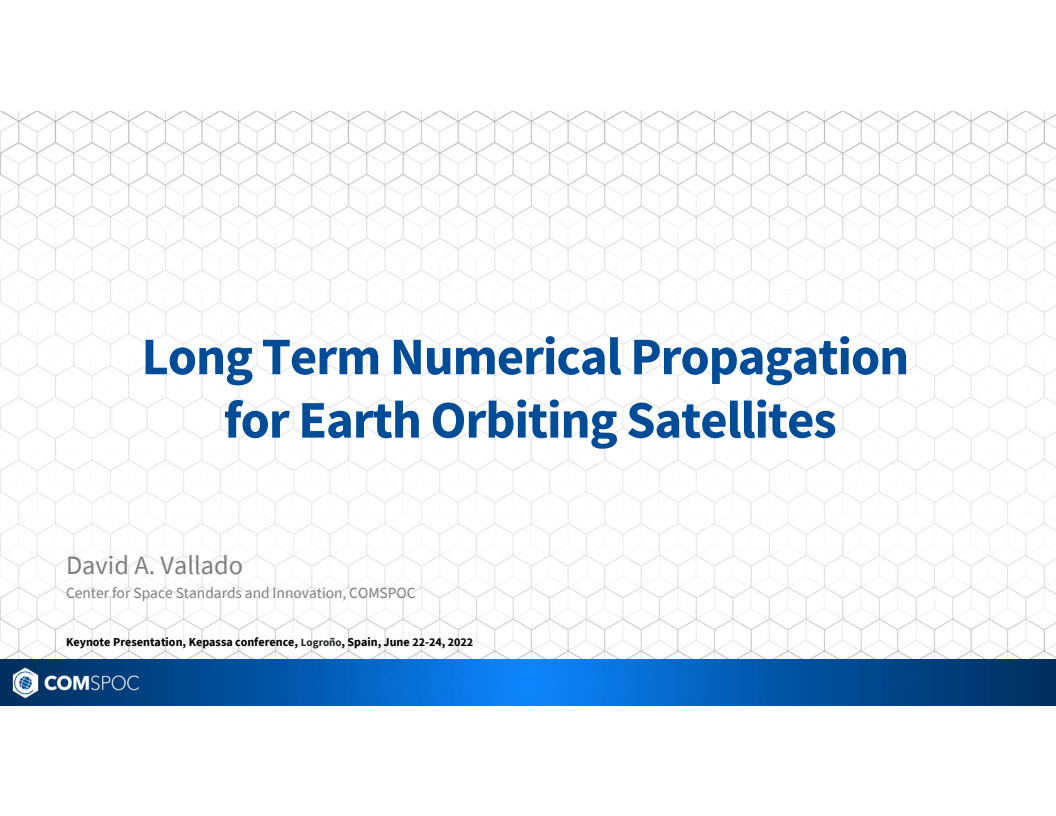Long-term numerical propagation for Earth orbiting satellites


Id: 304
Type: Conference paper
Published: 08/13/2019
Event: AIAA/AAS Astro Specialist Conference 2019
Authors:
Click an author to filter the list of related assets below.Abstract:
Numerical propagation techniques have been extensively studied and are routine for precise satellite operations. Most studies focus on time spans of a few days to several weeks, specific orbital classes, or interplanetary orbits. As long-term numerical operations be-come more commonplace, it’s useful to quantify accuracy performance for propagations of several months, to years. This paper performs long-term numerical propagation comparisons against reference orbits in a variety of orbital classes. Semianalytical techniques are also used in the comparisons including a general discussion of the initial osculating to mean element conversion. Finally, orbital size, shape, and orientation considerations are examined.
Citation:
Vallado, David A. 2019. Long-Term Numerical Propagation for Earth Orbiting Satellites. Paper AAS 19-601 presented at the AAS/AIAA Astrodynamics Specialist Conference, August 11-15. Portland, ME, accessible at https://comspoc.com/Resources/Content/Private/C-20220425T180045/Paper/AAS%2019-601%20Long%20Term%20Numerical%20Propagation%20Final.pdf.
Papers with related authors:




Using Spacebook and Cesium to Promote and Enhance Flight Safety
Read More

Actionability and Persistence Of Conjunction Data
Read More

Actionability and Persistence of Conjunction Data
Read More

Practical issues with using a full gravity field
Read More
LEO satellite behavior during the May 2024 Gannon geomagnetic storm
Read More
Deep operator and SSA collaboration for space sustainability
Read More
Synthetic Covariance Production Using a New Digital Approach
Read More
Contrasting the Inflection Points and Efforts in Space Traffic Coordination and Management
Read More
Addressing the debilitating effects of maneuvers on SSA accuracy and timeliness
Read More
Actionability and Persistence of Conjunction Data
Read More
DEEP OPERATOR AND SSA COLLABORATION FOR SPACE SUSTAINABILITY
Read More


Russian ASAT Debris Cloud Evolution and Risk
Read More
Results of comprehensive STCM data fusion experiment
Read More




Debris Risk Evolution And Dispersal (DREAD) for post-fragmentation modeling
Read More
Sequential Processing of ILRS Observations – Experiences over the last 5 years
Read More

Fragmentation event debris field evolution using 3d volumetric risk assessment
Read More

Application of New Debris Risk Evolution And Dissipation (DREAD) Tool to Characterize Post-Fragmentation Risk
Read More
Orbital Strategies to Mitigate the Solar Exclusion Effect on Space-Based Observation of the Geosynchronous Belt
Read More
New Consolidated Files for Earth Orientation Parameters and Space Weather Data
Read More
Updated Analytical Partials for Covariance Transformations and Optimization
Read More
Sequential Orbit Determination Using Satellite Laser Ranging
Read More
Improved SSA through orbit determination of Two Line Element Sets
Read More


Evaluating Gooding Angles-only Orbit Determination of Space Based Space Surveillance Measurements
Read More
ORBIT DETERMINATION ISSUES AND RESULTS TO INCORPORATE OPTICAL MEASUREMENTS IN CONJUNCTION OPERATIONS
Read More


